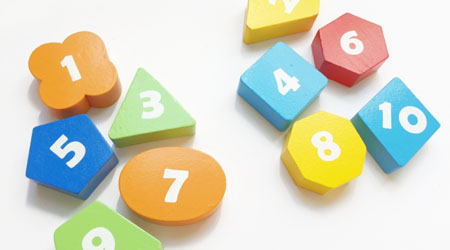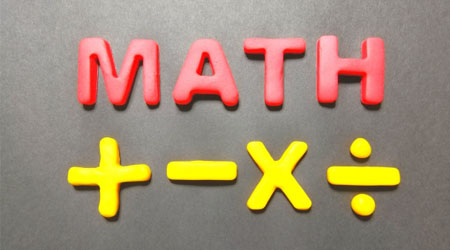In elementary school arithmetic, we learn factors (or divisors) and multiples. In our daily lives, we use factors and multiples frequently. So, it is important to understand what they are.
In both cases, we use multiplication and division to solve problems. Although the concept is different, we use similar methods to solve the problems.
In addition, for factors, there is the term greatest common factor (or greatest common divisor). For multiples, on the other hand, there is the term least common multiple. By comparing two or more numbers, we can find the greatest common factor and the least common multiple. The reason why factors and multiples are useful in our daily lives is that we learn the greatest common divisor and the least common multiple.
So, we will explain how to solve problems with divisors and multiples.
Table of Contents
What Is a Factor? A Divisible Number is a Divisor
First of all, what is a factor? When you divide a number by an integer, the number that is divisible is called a factor (or divisor).
For example, what is the factor of 12? When dividing 12, a divisible integer is a divisor. So, let’s think about what numbers go into $□$.
- $12÷□$
To find the factor of 12, let’s divide 12. The following integers can divide without the remainder.

The factors of 12 are 1, 2, 3, 4, 6, and 12. In the case of divisors, try to find divisible whole numbers.
Finding Factors by Multiplication
The method just explained is the most common method. However, in this method, we often miss the answer. For example, when answering for the divisor of 12, the answer might be “1, 2, 3, 4, 12”. In this case, the answer is incorrect because 6 is missing.
Therefore, it is important to avoid mistakes as much as possible. For this reason, we should try to find the answer by multiplying instead of dividing. So, let’s find the integer whose answer is 12 by multiplying as follows.
- $1×12=12$
- $2×6=12$
- $3×4=12$
In this way, we can get the answer. If the multiplication of integers results in 12, it means that we can divide without a remainder. The integers used in the multiplication are the divisors.
Note that $2×6=12$ and $6×2=12$ have the same meaning. Therefore, if you come up with $2×6=12$, you will know that 2 and 6 are factors. You don’t need to find all factors one by one as in division. It is more efficient to use multiplication to find the divisors.
The Concept of Common Factors and Greatest Common Factor
Once you understand what a factor is, you can learn about common factors (or common divisors) and the greatest common factor (or greatest common divisor). Earlier, we found the divisors. On the other hand, the same factors in two or more numbers are called common factors.
For example, what are the common divisors of 24 and 30? To get the answer, let’s write down all the factors of 24 and 30. It will look like this.
- Factors of 24: 1, 2, 3, 4, 6, 8, 12, 24
- Factors of 30: 1, 2, 3, 5, 6, 10, 15, 30
What are the common factors in these numbers? The common divisors are as follows.
- Common factors of 24 and 30: 1, 2, 3, 6
In this way, we found the common factors of 24 and 30.
The largest number among the common factors is called the greatest common factor. In the previous example, the greatest common factor is 6. Therefore, we can find that the greatest common divisor of 24 and 30 is 6.
In order to find the common factor and the greatest common factor, we need to find the divisor for each of the two or more numbers. Then, check the same factors.
What Is a Multiple? A Number Multiplied by an Integer Is a Multiple
We learn about multiples at the same time as we learn about factors. What is a multiple? A multiple is a number that is multiplied by a natural number.
For example, what are the multiples of 12. To find the multiples of 12, let’s multiply the natural numbers by 12 in order. The result is as follows.
- $12×1=12$
- $12×2=24$
- $12×3=36$
- $12×4=48$
- ……
As you can see, “12, 24, 36, 48…” are multiples of 12. Since there are an infinite number of natural numbers, there are an infinite number of multiples. Therefore, there are many multiples of 12. In any case, multiply a particular number by a natural number, and the answer that you get is multiple.
Multiples Are Divisible by a Specific Number: Check the Remainder
You can get multiples by multiplying. However, when finding multiples, we often use division. Why do we use division instead of multiplication?
A multiple is a number that can be divided by a specific integer. The concept is similar to that of divisors, and any divisible number can be considered a multiple.
For example, which of the following numbers are multiples of 14?
- 48, 70, 100, 108, 112
To get this answer, let’s do division. When you do so, there are two patterns: divisible and remainder. It looks like the following.
- $48÷14=3$ R $6$
- $70÷14=5$
- $100÷14=7$ R $2$
- $108÷14=7$ R $10$
- $112÷14=8$
We now know that if the answer is 5 or 8, we can divide. Therefore, we can see that the multiples of 14 are 70 and 112.
In fact, $5×14=70$ and $8×14=112$. Division is also multiplication. Just like with factors, use both multiplication and division when finding the answer to multiples.
How to Find Common Multiples and Least Common Multiple
If you understand what we have discussed so far, you will be able to understand common multiples and least common multiple. When comparing two or more numbers, the same multiples are called common multiples.
For example, what are the common multiples of 6 and 8? To answer this question, let’s write down the multiples of 6 and 8 respectively. It will look like this.
- Multiples of 6: 6, 12, 18, 24, 30, 36, 42, 48…
- Multiples of 8: 8, 16, 24, 32, 40, 48, 56, 64…
If we write out the multiples in this way, 24 and 48 are common. Therefore, the common multiples of 6 and 8 are 24 and 48.
In fact, the multiples of 6 and 8 go on indefinitely. Therefore, the common multiples of 6 and 8 are 24, 48, 72, 96, 120…… and so on. Thus, it is impossible to find out all the common multiples, we just need to find a few of them.
The smallest of these multiples is called the least common multiple; in the case of the multiples of 6 and 8, the least common multiple is 24.
There Is No Concept of Least Common Factor and Greatest Common Multiple
We learned about the concepts of the greatest common divisor and least common multiple. On the other hand, there is no concept of least common factor and greatest common multiple.
What is the smallest number among all the common factors? It is 1. For all integers, the least common factor is 1. Since the least common factor is always 1, there is no point in calculating it. Therefore, you will be asked questions about the greatest common divisor, not the least common divisor.
Also, there is no concept of the greatest common multiple. As we explained before, there are an infinite number of multiples. To review, the common multiples of 6 and 8 are “24, 48, 72, 96, 120……” and so on forever.
No matter how large the number increases, you will never find the greatest common multiple. This is why the greatest common multiple does not exist. You can only find a number with the least common multiple, not the greatest common multiple.
Divisors and Multiples Used in Everyday Life
How can this knowledge be useful in everyday life? There are a lot of ways to use factors and multiples. Let’s consider one of the more familiar examples, shopping.
For example, which of the following juices is more affordable?
- 5 bottles of juice for \$8.
- 8 bottles of juice for \$12.
To think about this question, let’s calculate the least common multiple: what is the least common multiple of 5 and 8? Let’s write down the multiples of 5 and 8 as follows.
- Multiples of 5: 5, 10, 15, 20, 25, 30, 35, 40…
- Multiples of 8: 8, 16, 24, 32, 40, 48, 56, 64…
Thus, we found that the least common multiple is 40. In other words, if we compare the price of buying 40 bottles of juice, we can find out which one is cheaper. So, let’s calculate as follows.
- 8 dollars (5 bottles) × 8 sets = 64 dollars
- 12 dollars (8 bottles) × 5 sets = 60 dollars
We can see that when buying 40 bottles of juice, it is cheaper to buy 8 bottles of juice for \$12. This is a simple example, and in this way, factors and multiples are applied in various situations in daily life.
Understanding the Calculation of Factors and Multiples
One of the things you learn in elementary math is factors and multiples. If you can multiply and divide integers, you can understand the concept of factors and multiples.
An integer that can be divided by a specific number is a divisor. If you use multiplication instead of division, you will make fewer calculation errors. Also, when two or more numbers are compared, the same factors are the common factors. The largest number among them is called the greatest common divisor.
On the other hand, a number that is multiplied by an integer is multiple. There are an infinite number of multiples. When two or more numbers are compared, the same multiples are called common multiples. The smallest number among the common multiples is called the least common multiple.
Let’s understand the concept of factors and multiples. The greatest common factor and the least common multiple are applied in many situations, and calculations using them will be useful in our daily lives.





